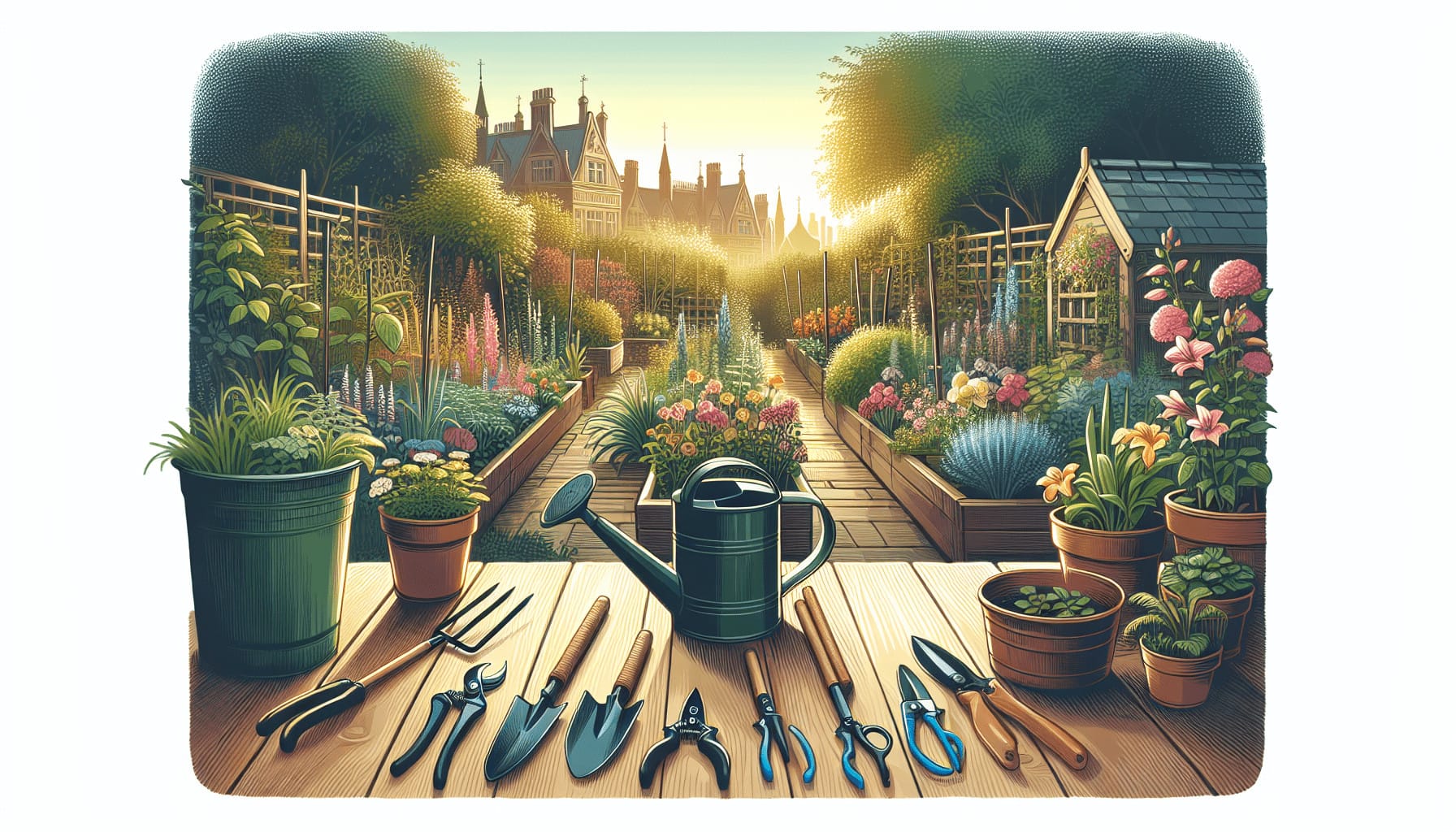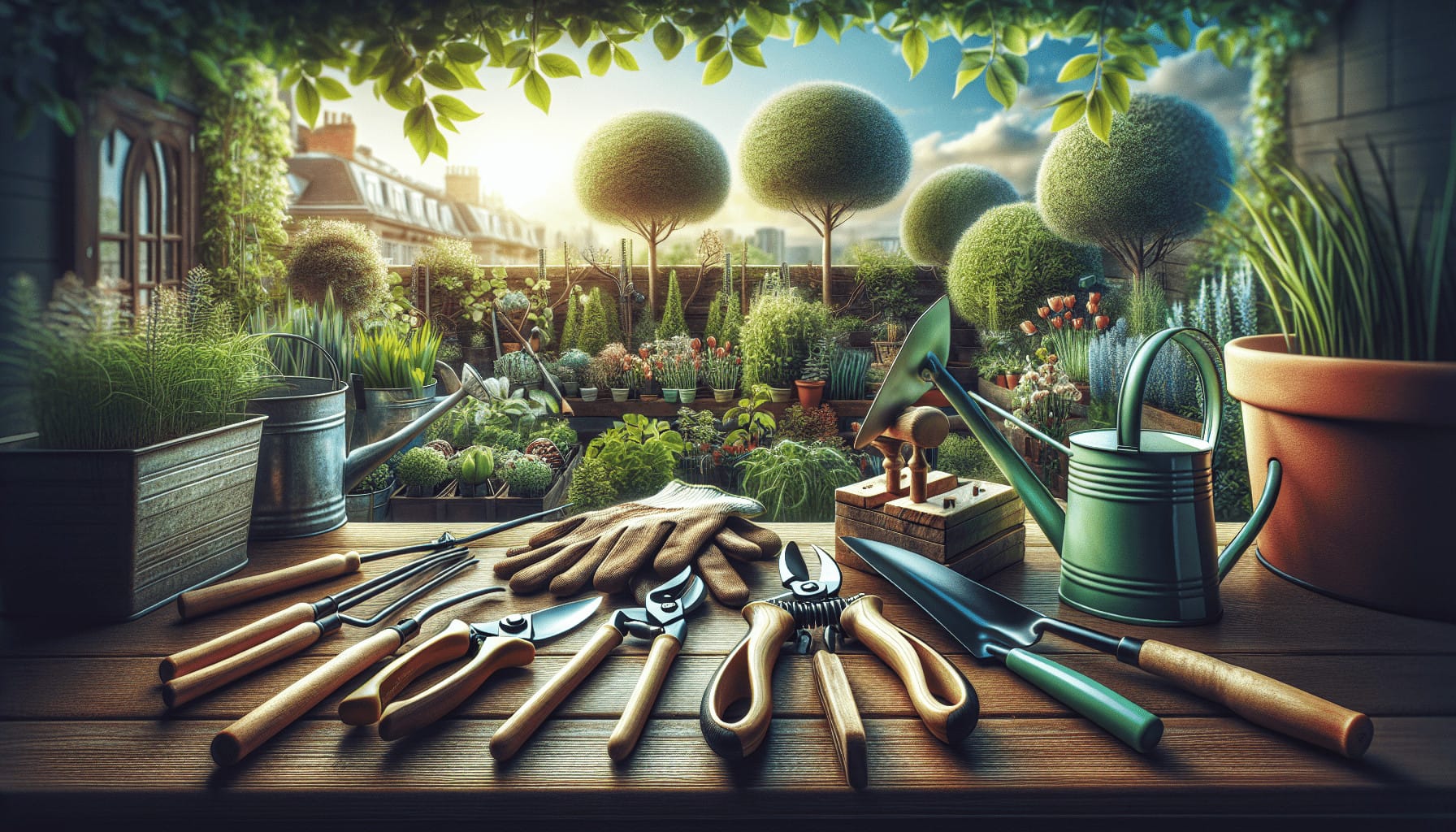Have you ever thought about how much effort you put into maintaining the vibrancy and health of your rooftop garden, only to overlook the very tools that help make it all possible? Just like your plants, garden tools require care and attention to ensure they perform optimally. Let’s talk about maintaining those essential tools to keep your rooftop garden flourishing with minimal fuss.
Understanding the Importance of Maintaining Garden Tools
Preserving the longevity and efficacy of your gardening tools is crucial. Regular maintenance not only extends the life of the equipment but also ensures efficiency in every gardening task. Well-maintained tools provide cleaner cuts, prevent disease spread in plants, and make your gardening experience more enjoyable and less labor-intensive.
Benefits of Well-Maintained Tools
Investing time in tool maintenance offers multiple advantages. First, it leads to better performance by keeping your tools in tip-top condition, making gardening tasks easier and faster. Second, it prevents rust and corrosion, which can ruin expensive equipment. Additionally, proper maintenance reduces the likelihood of plant diseases, as clean tools are less likely to spread contaminants. Lastly, a well-maintained tool collection can save you money in the long run by reducing the need for replacements.
Types of Rooftop Garden Tools
Before diving into maintenance, it’s important to categorize the tools commonly used in rooftop gardening. Different tools serve different functions, from cutting and pruning to digging and watering. Understanding their roles and how they’re constructed helps in maintaining them correctly.
Cutting and Pruning Tools
These tools include shears, pruners, loppers, and saws. They are essential for shaping plants, removing dead wood, and harvesting produce. Since these tools are in direct contact with your plants, maintaining their sharpness and cleanliness is crucial.
Digging and Planting Tools
Trowels, spades, and forks fall into this category. These tools are used to work the soil, plant seeds, and transplant seedlings. Regular cleaning and proper storage can prevent soil build-up and deter rust.
Watering Tools
Watering cans, hoses, and nozzles ensure your plants receive the right amount of water. Maintaining these tools can prevent water wastage and prolong their usability.
Miscellaneous Tools
This category includes gloves, wheelbarrows, and other miscellaneous items that assist in gardening activities. Gloves require regular washing, while wheelbarrows need to be cleaned like other metal tools to avoid rust.

How to Properly Clean Garden Tools
Keeping your garden tools clean is the first step in maintaining them. Dirt and residue left on tools can lead to rust and the spread of plant diseases. Let’s look at the steps required to keep your tools gleaming.
Step-by-Step Cleaning Process
Disassemble If Applicable: Some tools can be taken apart for a thorough cleaning. This is especially useful for complex tools like pruning shears.
Remove Dirt and Debris: Use a wire brush or a stiff-bristled brush to remove soil and plant residue from the surface.
Soak in Soapy Water: Submerge the tools in warm, soapy water to remove stubborn residues. Use dish soap for its grease-cutting properties.
Scrub and Rinse: For tools used in cutting, consider using rubbing alcohol or a bleach solution (1 part bleach to 10 parts water) to sanitize them effectively. Rinse thoroughly with water afterward.
Dry Thoroughly: Water left on metal surfaces can cause rust. Use a clean towel to dry your tools or let them air dry in a ventilated area.
Tips for Cleaning Specific Tools
- Pruning Tools: After cutting diseased plants, disinfect your tools with alcohol to avoid spreading pathogens.
- Watering Tools: Remove mineral deposits from hoses and nozzles by soaking them in vinegar.
Sharpening Your Garden Tools
Once cleaned, ensuring that your tools have a sharp edge is crucial for efficiency. Dull tools require more effort to use and can damage plants.
Tools Needed for Sharpening
To sharpen garden tools, you’ll need a sharpening stone or file, a vise to hold the tool steady, and some safety gear like gloves and goggles.
How to Sharpen Common Tools
Pruning Shears:
- Secure the shears in a vise.
- Using a sharpening stone, follow the existing angle of the blade.
- Apply firm, even strokes until the edge feels sharp.
Spades and Shovels:
- Place the spade in a vise.
- Use a file or grinder to follow the edge’s bevel.
- Check the edge for sharpness by feeling it lightly with your finger.
Scythes and Large Blades:
- For longer tools like scythes, use a whetstone.
- Hold the whetstone at a consistent angle to the blade and move it in circular motions.
Frequency of Sharpening
The frequency depends on use; however, most tools benefit from a semi-annual sharpening, with the exception of pruning tools, which may need more frequent attention during peak gardening seasons.

Oiling and Lubricating Tools
Oiling is a simple yet effective way to prevent rust and maintain the smooth operation of movable parts. Tools with pivot points, such as pruners and shears, particularly benefit from regular lubrication.
Selecting the Right Oil
The best oils for garden tools are light machine oils or specialized garden tool oils. Avoid using cooking or vegetable oils as they can become sticky over time.
How to Apply Oil
- Clean the Tool: Make sure the tool is clean and dry before oiling.
- Apply the Oil: Use a few drops of oil directly onto the metal parts.
- Wipe Off Excess: Use a cloth to spread the oil evenly over the surface and wipe off any excess to reduce the risk of dirt accumulation.
Frequency of Lubrication
Oil all metal tools at least once a month if they’re in regular use. Increase to weekly during periods of heavy gardening work.
Storing Your Tools Properly
Proper storage is just as important as cleaning and sharpening. Storing tools in a dry, organized environment can significantly prolong their lifespan.
Tips for Optimal Tool Storage
- Clean Before Storing: Always clean and dry tools before putting them away.
- Use a Tool Rack: A tool rack helps keep items off the ground and organized.
- Indoor Storage: If possible, store tools indoors or in a dry shed to avoid moisture exposure.
- Rust Prevention: Store tools in a bucket of sand mixed with motor oil to prevent rust.
Seasonal Considerations
During winter or long periods of inactivity, it’s a good idea to perform a full maintenance routine before storing tools. Consider using silica gel packets in your storage area to control humidity.
Troubleshooting Common Tool Issues
Even with the best care, tools can sometimes malfunction or show wear. Learning how to troubleshoot common issues can save time and money.
Identifying Common Problems
- Stiff Pruners: Often caused by rust or lack of lubrication.
- Blunt Edges: Result from usage and can be addressed by sharpening more frequently.
- Cracked or Broken Handles: Occur either due to age or improper use.
Problem-Solving Steps
- Rust Removal: Use a vinegar soak to remove rust from small areas or a rust eraser for detailed work.
- Lubrication: If tools feel stiff, apply more lubricant to joints and moving parts.
- Replacement: For broken parts, evaluate whether repair or replacement is more cost-effective.
When to Seek Professional Help
If issues persist despite regular maintenance, it might be time to consult a professional for complex repairs or replacements.
Eco-Friendly Maintenance Practices
Considering the environment while maintaining your tools can make your gardening habit even greener.
Using Natural Cleaning Products
Natural cleaning methods like using baking soda paste or vinegar can be effective and better for the environment than synthetic chemicals.
Recycling and Disposal
Recycle old or unusable tools appropriately. Metal parts can often be recycled, reducing waste and contributing to environmental sustainability.
Sustainable Tool Choices
Consider purchasing tools made from sustainable materials. Wooden handled tools from well-managed forests or stainless steel tools, which are more durable, are sound choices.
Leveraging the Right Resources for Tool Maintenance
Just like gardening, learning to maintain your tools better comes from leveraging reliable resources and knowledge bases.
Books and Online Resources
Numerous books and online articles offer in-depth advice on tool maintenance. Websites dedicated to gardening communities can also provide helpful tips and experiences.
Joining Gardening Workshops
Local workshops or online classes often cover garden tool maintenance, offering hands-on experience and expert advice.
Community Engagement
Engage with local gardening groups or online communities where tips and advice are regularly shared. Often, seasoned gardeners are more than happy to share their wisdom on tool care.
Maintaining a Garden Journal
Keeping a journal to track your maintenance schedule, tool condition, and date of last sharpening or oiling can ensure nothing slips through the cracks.
As you invest your effort in maintaining your rooftop garden tools, you will find that this simple act enhances your entire gardening experience. With each stroke of your newly sharpened shears or each push of your rust-free shovel, your garden will feel just a bit more vibrant, just a bit more yours. There’s a unique satisfaction in seeing your garden thrive and knowing that both plants and tools are being taken care of. Happy gardening!
